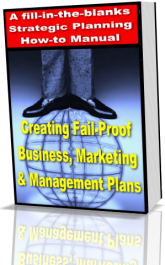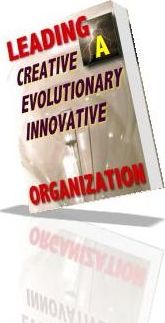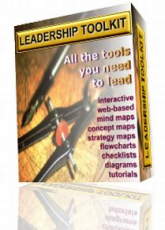|
Appreciate to Motivate (Five Keys to Successful Team Building)
By: Ed Sykes
Mary Kay Ash, founder of Mary Kay Cosmetics, once said, There are two things people want more than sex and money…recognition and praise. Time and time again the one motivating factor that production
Mary Kay Ash, founder of Mary Kay Cosmetics, once said, “There are two things people want more than sex and money…recognition and praise.” Time and time again the one motivating factor that production and is at the top of most employee lists is appreciation for a job well done. It is requested more than the green stuff, money.
Why don’t more managers, owners, and employees give appreciation? Some people state they don’t know how to give it. Others say they don’t know what to give. Still others say they are too busy to give or show appreciation.
I think this is one of the biggest sins of managers, being too busy to give appreciation for a good job well done. Remember what the old transmission commercials used to say, “You can pay me now or you can pay me later.” Well, that is what giving appreciation is about. You can invest in your employees now and “pay” them with sincere appreciation and achieve even better performance. Or you will “pay” later when you see your team’s performance sink, corrective actions, and overall morale decrease.
The following are five tips to giving sincere appreciate that will motivate your team to soar to higher level and achieve
more:
1. Be Specific
In order to get the same behavior or action again you need to let the employee know exactly what action(s) you are appreciating. For example, the typical attempt at appreciate sounds like this:
Manager: "Mike, you did a great job earlier today. Keep up the good work!"
Mike:"Thanks" (Mike is thinking what is he complimenting me on?)
The correct way:
Manager: "Mike you did a great job on the report earlier today. I can see you invested a lot of time on the report by
the detail you put in it. I really appreciate you effort.
Thank you."
Mike: "I appreciate you noticed the time a put into the report. Thanks!" (Mike is thinking that the manager really did read it and appreciates his effort. I will be glad to do it again.)
As you can see the employee has a clear understanding of what action the manager is showing appreciated for and he is motivated to take on the project again.
2. Be Timely
Make sure you show appreciation as soon as possible to the action you appreciate. The further the distant in time between the appreciation and the action the less impact it will have to motivate the employee.
Manager: Mike, the report you submitted six month ago was great. Keep up the good work. Thanks!"
Mike: "Thanks, I think. What report are you taking about?"
Always find time to show appreciate in a timely manner. Even if you need to drop something else take time to appreciate your employees.
3. Be Fair
One of the key concerns of students in my workshops is that when appreciation is shown, it doesn’t seem fair. The biggest villain of this is the dreaded "Employee of the Month" board. Many times when you ask the "Employee of the Month" what did you do to earn it they say, "I don’t know." I have one action you must take when giving
appreciation...be consistent!
* First, clearly state the rules for appreciation so that everyone understands how appreciate is earned.
* Second, be consistent when showing appreciation. If one employee does a favorable action and you show appreciation and another employee does the same or
similar action and you don’t show appreciation you have just sewn the seeds of bad morale and feelings of favoritism.
* Third, always be on the lookout for "finding something good" your employees do well. Once you achieve this mindset you will always find the good and increase morale and productivity within your team and organization.
* Fourth, be pure in your appreciation. If you to show appreciation, don’t muddle it with other communication. In other words, don’t show appreciation for one action and then start discussing a potential corrective action for another action. This sends mixed signals that say to the receiver of this communication, "I don’t want any appreciation because there is always something bad attached to it." Keep it pure!
4. Be Public, if Possible
Appreciation is not something you hide. It works best when done publicly. Show you appreciation in a public way in meetings, in front of team members, and management. The funny thing is that once you get in the habit of doing this many of your team members will increase the activity they need to take to also earn this public appreciation.
5. Be Relational
When I ask the question, "Why do you come to work everyday?," in my workshops I usually get "to get paid" as the first answer the students give. Then as we discuss it further it always comes down to "I feel like I make a difference" as the main answer.
You see, in most cases the reason why employees decide to climb out of bed in the morning, their toes touch the floor, and they decide to drive to work is that they feel that they make a difference where they work.
I remember an opportunity to emcee a large sales meeting for a Fortune 500 company. I introduced a Senior Vice President and he went to the lectern to address over 500 employees. He announced that the company achieved sales of $14 billion. Then he quickly announced that their goal for the next year was $17 billion. As he was talking I was looking at the audience. They were unusually quiet and attentive. However, as I looked at them they had a glassy eye look. I realized the problem was that the speaker was just talking numbers. He didn’t relate how those 500+ employees made a positive difference for the company. All he needed to say was how their sacrifice everyone translated in the success of the company. Along with this, they will meet the coming years challenges only with the talents of our employees. So simple, but so rarely done.
Relate the action done with how if affects the team, department and organization. Let’s go back to our earlier examples to complete the appreciate process:
Manager: "Mike you did a great job on the report for the new computer system earlier today. I can see you invested a lot of time to do the research so that we have the necessary information to request the computer system.
Mike, we appreciate your efforts because the new computer system will make our team more productive so that the department will achieve its goals and the company will be profitable this year. Bottom line, bigger bonuses for everyone. I look forward to seeing your high level of work in the future. Thank you."
Mike: "Thanks. I appreciate making a difference. Please let me know whatever I can do to help the team."
As you can see, Mike has a clear sense of achievement and where he fits in the company. Also, the manager encouraged
Mike to do the same behavior soon by saying "I look forward to seeing your high level of work in the future."
And the manager ended with a sincere "thank you."
These are five simple tips that will motivate your employees to achieve more with a minimum amount of efforts. Starting today, apply these techniques and you will see a world of difference in your team, department, and organization.
Remember, "pay" yourself with the rewards now or "pay" yourself with a low performing team later.
Copyright © 2004 Ed Sykes. All rights reserved
About the author:
Ed Sykes is a professional speaker, author, and success coach in the areas of leadership, motivation, stress management, customer service, and team building. You can e-mail him at mailto:esykes@thesykesgrp.com, or call him at (757) 427-7032. Go to his web site, http://www.thesykesgrp.com,and signup for the newsletter, OnPoint, and receive the free ebook, "Empowerment and Stress Secrets for the Busy Professional."
|







